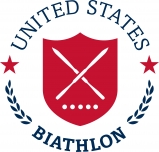A few weeks ago I had the pleasure of spending some time with Zach Caldwell of Engineered Tuning and Caldwell Sport Specialties at his home and headquarters in West Townshend, Vermont.
For those of you that don’t know, Zach operates a top notch stonegrinding and ski selection business. My visit more than confirmed my earlier impression that he is absolutely one of the best at what he does.
To begin, he took me through the process which he uses to evaluate both classic and skating skis. If you are interested in how skis are selected for world class skiers, please see his
notes on the subject
To make a long story short, if you have your skis selected by Zach Caldwell you can be certain that no shortcuts have been taken and that he has gone to great lengths to ensure that you wind up satisfied with your equipment.
I was there in large part because I took a large number of XC Ottawa’s racing skis to be ground. I got an up close look at the process used for grinding skis. The steps taken are approximately as follows:
1. The ski is passed through the grinder to determine the general flatness of the ski. Essentially, if the machine doesn’t touch some portions of the base it is obvious where the skis are not flat.
2. The skis are then flattened by hand using a metal scraper. This is done meticulously with a VERY sharp scraper by a VERY experienced hand. Following flattening the skis are passed through the grinder again to make sure that the stone now puts a pattern everywhere on the base.
3. The skis are given the finest structure possible (“polishedâ€). Essentially, at this point the skis are completely flat but have virtually no structure.
4. Finally, the particular structure which you have requested is applied over the polished surface via various passes through the machine.
Now this makes it sound a bit simpler than it really is. A multitude of variables have been carefully evaluated and are controlled for in the grinding process. This includes the temperature of the water in the machine, the feeding speed, the stone speed etc. To make a long story short, the only way to become really good at this type of work is to do a lot of it and to be continually analyzing your work with a critical and objective eye.
The end result of this process is extremely predictable, as we at XC Ottawa have discovered: Your skis are noticeably better than they were before!
One thing that is pretty cool about Zach’s operation is that his grinder is inside a truck that is essentially a portable ski grinding shop. I have provided a few pictures of the inside of the truck below. This means that he travels all over the place to grind skis, and he will likely be somewhere near where you live during the course of the winter.



